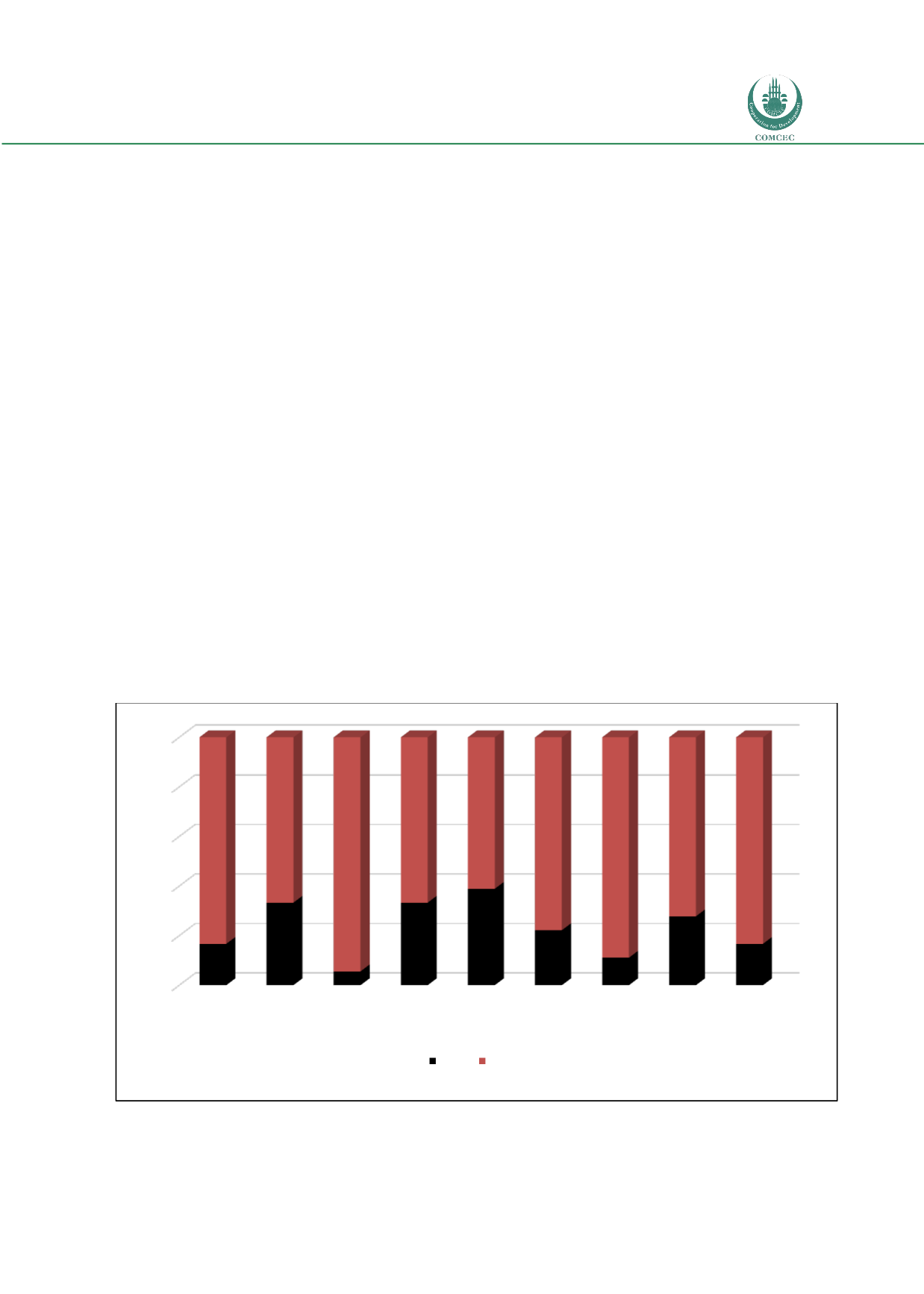

Risk Management in
Islamic Financial Instruments
113
5.5 RISK MEASURING AND MANAGEMENT TECHNIQUES
Banks must establish regular management information systems for measuring, monitoring,
controlling, and reporting different risk exposures. IFIs can use a number of techniques to
measure and manage risks. This study asked the respondents to identify whether they are
familiar with the techniques. Gap and duration analysis are similar in principle. Gap identifies
the dollar gap, while the duration gap analyses the gap in maturity for rate sensitive assets and
liabilities. These techniques are especially important for liquidity risk management. Both
earnings at risk and value at risk methods use confidence intervals, which is sometimes
difficult for managers to interpret. Simulation techniques and best-worse case analyses fall
largely under the scope of scenario analysis. Extensive mathematical and management skills
are required to perform and interpret the outcomes of these analyses.
Figure 5.4 summarises the findings. Duration analysis, earnings at risk analysis, Value at risk
analysis, risk adjusted rate of return on capital analysis, and simulation techniques were not
utilized properly by the banks. One of the reasons could be the limited computerized
management of risk. The traditional method of maturity matching is quite popular among IFIs.
The results imply that IFIs do not use sophisticated techniques to measure and manage risks. It
is not a necessity that banks should be using these techniques. Perhaps a combination of some
of the techniques may enrich the experience of the managers by helping them in making
informed decision. It is important to note that IFIs have moved to the internal rating based
approach required by Basel III. This approach offers flexibility and freedom to IFIs, but
increases the level of commitment and responsibility towards the efficient management of the
banks.
Figure 5.4: Risk Measuring and Management Techniques
0
20
40
60
80
100
Gap analysis Duration
analysis
Maturity
matching
Earnings at
risk analysis
VAR analysis Simulation
techniques
Best vs.
Worse case
scenarios
Risk adjusted
rate of
return on
capital
Internal
rating
systems
83,3
66,7
94,4
66,7
61,1
77,8
88,9
72,2
83,3
No (%)
Yes (%)

















